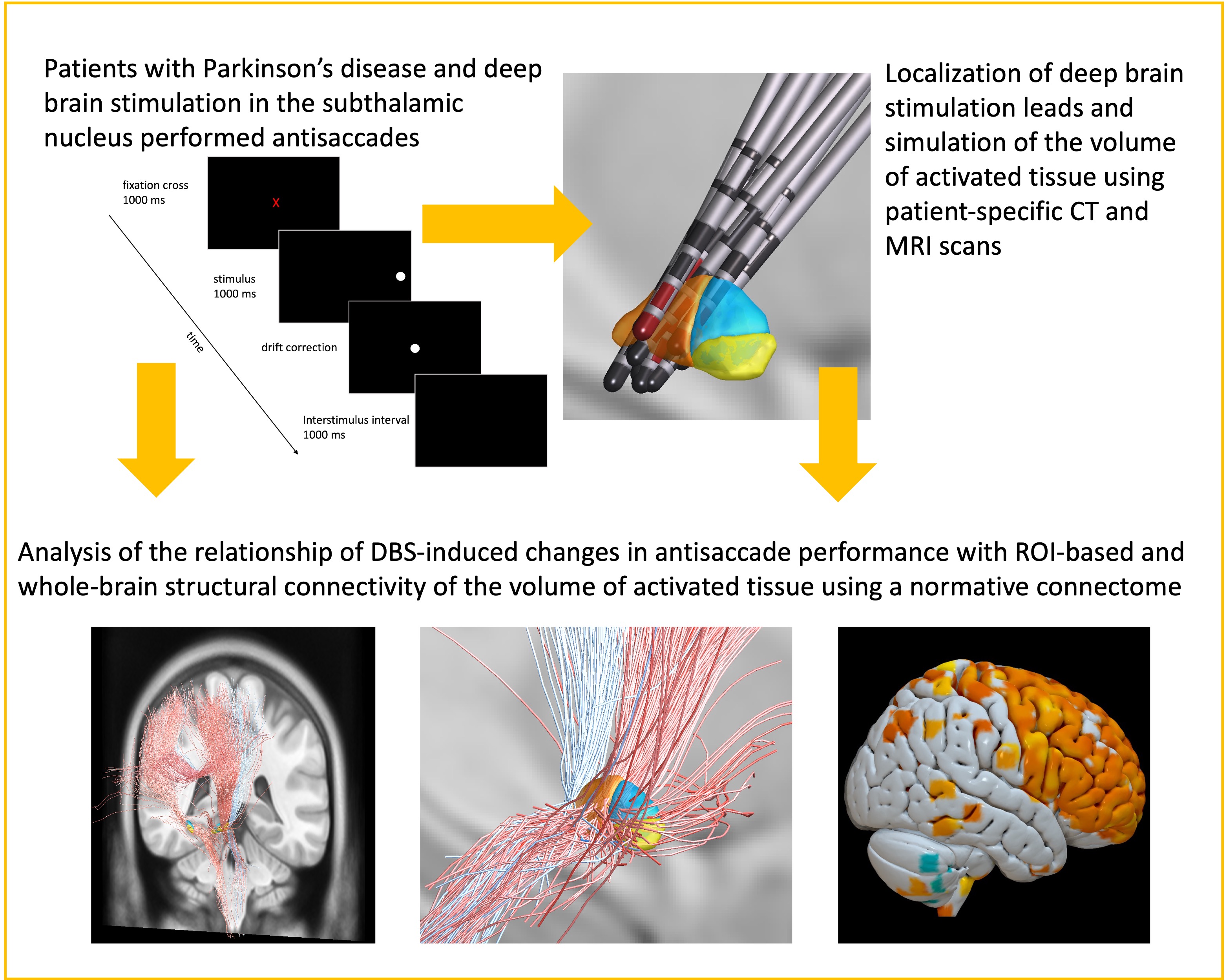Category: Parkinson's Disease: Cognitive functions
Objective: The effect of subthalamic deep brain stimulation on response inhibition and voluntary action control depend on connectivity of the volume of activated tissue with the prefrontal cortexThis study aimed to describe how the location of the stimulation volume within the subthalamic nucleus (STN) and its whole-brain structural connectivity affect response inhibition in persons with Parkinson’s disease (PD).
Background: There is an ongoing debate whether and how deep brain stimulation (DBS) in the STN modifies cognitive control processes like response inhibition. Effects of DBS may differ dependent on individual differences in lead placement and shaping of the stimulation volume.
Method: Fourteen participants with PD performed an antisaccade task on and off STN-DBS in a randomized order. Stimulation volumes were computed based on patient-specific DBS lead localizations using preoperative MRI and postoperative CT scans. Structural connectivity of the stimulation volumes with pre-defined cortical oculomotor control regions as well as whole-brain connectivity were estimated using a normative connectome (Figure 1).
Results: Detrimental DBS-effects on response inhibition, measured as antisaccade error rate, depended upon the magnitude of the intersection of volumes of activation with the non-motor subregion of the STN and on its structural connectivity with bilateral frontal eye fields and right anterior cingulate cortex. Furthermore, antisaccades were initiated faster with STN-DBS switched on when the stimulation volume was connected to fibers passing the STN laterally and projecting onto the prefrontal cortex.
Conclusion: Our results confirm that stimulation in the ventromedial non-motor subregion of the STN which connects to the prefrontal cortex is associated with DBS-induced impulsivity. DBS-induced acceleration of voluntary saccade generation, on the other hand, may be an off-target effect driven by stimulation of corticotectal fibers directly projecting from the frontal and supplementary eye fields onto brainstem gaze control areas. Our findings could help implement individualized circuit-based DBS strategies that avoid impulsive side effects while improving voluntary oculomotor control.
Parts of this abstract has previously been presented as a poster at the German Congress for Clinical Neuroscience 2023, March 2nd – 4th.
To cite this abstract in AMA style:
J. Waldthaler, A. Sperlich, C. Stüssel, K. Steidel, L. Timmermann, D. Pedrosa. The effect of subthalamic deep brain stimulation on response inhibition and voluntary action control depend on connectivity of the volume of activated tissue with the prefrontal cortex [abstract]. Mov Disord. 2023; 38 (suppl 1). https://www.mdsabstracts.org/abstract/the-effect-of-subthalamic-deep-brain-stimulation-on-response-inhibition-and-voluntary-action-control-depend-on-connectivity-of-the-volume-of-activated-tissue-with-the-prefrontal-cortex/. Accessed September 12, 2025.« Back to 2023 International Congress
MDS Abstracts - https://www.mdsabstracts.org/abstract/the-effect-of-subthalamic-deep-brain-stimulation-on-response-inhibition-and-voluntary-action-control-depend-on-connectivity-of-the-volume-of-activated-tissue-with-the-prefrontal-cortex/

